Add a little tropical flavor to your breakfast table with this homemade mango jam recipe. It’s a delicious topping for toast or pancakes.
For another tropical spread, try this lilikoi jelly.
Mangoes are one of those flavors that can transport a person right to the tropics. If you’re lucky enough to score some, try capturing the flavor in jars with this delicious mango jam. (I have been known to do some preserving on my vacations, so I can bring my favorite flavors home!)
Ingredients
Mangoes: This tropical fruit comes in many varieties. Use what’s readily available in your region. I used “wild” roadside mangoes, which tend to be a bit stringy for fresh eating. In jam? They’re fine.
Sweetener – I used sugar for this recipe, but you can opt to use honey as well. The quantities differ a bit, so be sure to check the notes in the recipe card below. When I use sugar, I opt for organic cane sugar, but any granulated sugar will do.
Lemon juice: USDA preserving recipes all call for using bottled lemon juice. This assures that the acidity level in recipes is safe for canning.
5 Easy Steps to Transform Your Pantry!
Ready to switch from store bought to homemade? Let me help you make some changes! Grab my FREE five-part guide to getting started.
Pectin – This recipe is made using Pomona’s Universal Pectin. This is the only pectin I use anymore as it allows me to use much less sweetener. The standard pectin brands use an obscene amount of sugar in my opinion, often requiring equal amounts of sugar and fruit! This product uses a low methoxyl method and calls for using two different ingredients, which are included in the box: pectin (the large packet) and calcium powder (the small packet). The dry pectin is mixed with the sweetener before being added to the fruit. The calcium water is added directly to the fruit.
Making the puree
My method for making puree works for any type of mango, but it’s especially useful when working with roadside quality fruit that can tend to be a bit stringy.
Simply peel the mangoes and put them in a pot with about an inch of water. Cover the pot and cook for about 1/2 until the fruit is mushy. Set the fruit aside to cool.
Once cooled, wash your hands and grab a mango! Squeeze the pulp right off the pit and into the pot. This hands-on method allows you to get as much of pulp as possible.
Cooking the jam
Start by measuring out the mango pulp. You’ll need about 6-7 medium sized mangoes to make enough pulp for this recipe. Heat the pulp in a large saucepan along with the lemon juice and calcium water.
Combine the pectin with the sweetener, making sure it’s thoroughly combined.
When the mango mixture is boiling, add the sweetener to the mix, stirring for a minute or two to assure that the pectin is well distributed. Using an immersion blender for this also helps to eliminate the stringy bits, but it’s not entirely necessary. A whisk works, too!
This recipe measured at a pH of about 3.5, putting it well into the “safe” zone for canning.
Canning jam
You’ll need special canning jars, lids, and rings (read more about canning equipment here) to make this mango jam shelf-stable, but the process isn’t difficult.
Once the jars are filled, you’ll process them in a water bath. What this means is you’ll put the filled and sealed jars of jam into boiling water and heat them for ten minutes. This assures that the jars will seal well.
Remove the jars to a towel-covered countertop and allow to cool fully. As they cool, you’ll hear the little “tink” sound of the jars sealing. Store any unsealed jars in the fridge and use those first. (This is unusual, but it does happen once in awhile.)
🍅 Safety First!
Canning is an excellent way to preserve food for the pantry, but there are some important safety considerations to keep in mind. The recipes on this site have been made following safe canning procedures by a certified Master Food Preserver.
- Know the difference between water bath canning and pressure canning. Low acid items must be pressure canned for safety.
- Altering ingredients may change the recipe’s pH, posing a safety issue. I highly recommend investing in pH paper to test your products for acidity level when canning. Note: For safe water bath canning, the Hawaii Master Food Preservers suggest a pH of 4.2 or lower in the tropics. In other regions, the recommended pH is 4.6 or lower.
- Use the proper jars and lids. Never reuse lids, with the exception of the Tattler or Harvest Right hard plastic lids that are intended for such a purpose.
- For more on canning equipment, please go here.
- Want to learn more? The National Center for Home Food Preservation is the go-to resource for safe canning information.
Remove the ring from each sealed jar, rinse to remove any jam residue, and store (without the ring) in the pantry.
Here’s a more detailed look at canning jam and jelly.
Spread this mango jam on toast, or try it in a delicious and refreshing jam seltzer!

Mango Jam
Homemade mango jam brings the flavor of the tropics to your morning toast! A safe recipe for canning by a certified master food preserver.
Ingredients
- 5-1/2 cups mango pulp (6-7 medium sized mangoes)
- 5-1/2 teaspoons calcium water (from Pomona's Pectin package)
- 1/2 cup lemon juice (bottled)
- 1 cup sugar
- 4 teaspoons pectin (from Pomona's Pectin package)
Instructions
PREPARE FOR CANNING
- Prepare the calcium water: Combine ½ teaspoon calcium powder (from the small packet in the box of Pomona’s pectin) with ½ cup water in a small jar. Screw on a lit and shake until well-combined. You'll have more than you need for this recipe. Store the excess in the refrigerator for use in making additional jam or jelly recipes.
- Wash the jars you'll use, making sure each is clean and free of nicks in the rim, which could impede sealing.
- Wash the lids and rings in hot soapy water. (If you're using non-Ball brand lids, prepare as suggested by manufacturer.)
- Place empty jars in a canning pot or large stock pot with enough water to cover by an inch or two, cover pot, and set on high heat. It can take awhile for the water to heat, so get it started before you begin making the recipe.
MAKE THE CALCIUM WATER
- Combine ½ teaspoon calcium powder (from the small packet in the box of Pomona’s pectin) with ½ cup water in a small jar.
- Screw on a lit and shake until well-combined. You'll have more than you need for this recipe.
- Store the excess in the refrigerator for use in making additional jam or jelly recipes.
MAKE THE MANGO JAM
- Measure the mango pulp, lemon juice, and calcium water into a large saucepan; bring to a boil.
- Meanwhile, combine the sweetener with the pectin until it's thoroughly combined.
- When the mango mixture comes to a boil, stir in the pectin and sweetener, stirring vigorously for 1 to 2 minutes to dissolve the pectin while bringing the jam back to a boil. I used my immersion blender to do this, as it also helped to puree the stringy bits of mango as well as thoroughly combine the pectin with the other ingredients.
- Remove from heat when the jam boils.
CANNING THE JAM
- Ladle hot jam into quarter-pint, half-pint, or pint sized jars, leaving 1/4" head space. A canning funnel makes this easy.
- Wipe jar rims to remove any jam that may have spilled. A clean rim is essential to a good seal.
- Set jar lids in place. Screw bands on finger tight.
- Use a jar lifter to gently submerge jars into hot water in the canning pot. Water should cover the top of the jars by an inch. The water will cool somewhat in reaction to the addition of the jars. Return the water to a simmer and then set the timer.
- Process for 10 minutes 0-1,000 feet altitude; add an additional minute for every additional 1,000 feet in elevation.
- Remove jars from water using the jar lifter and transfer to a solid, towel-covered surface. Allow to cool for 24 hours.
- Check seals. Lids should be solid and pulled down tight. (if they flex and pop, the jar didn’t seal; put unsealed jars in the refrigerator and use those first).
- Remove rings and wash outsides of jars. Store in a cool, dry place.
Notes
Boiling lids or heating above 180°F as once recommended can damage the sealing compound.
This recipe tested at about 3.0 pH, making it safe for water bath canning.
This recipe is made using Pomona’s Universal Pectin. This is the only pectin I use anymore as it allows me to use much less sweetener. The standard pectin brands use an obscene amount of sugar in my opinion, often requiring equal amounts of sugar and fruit! This product uses a low methoxyl method and calls for using two different ingredients, which are included in the box: pectin (the large packet) and calcium powder (the small packet).
SOURCE: Adapted from Pomona's Universal Pectin.

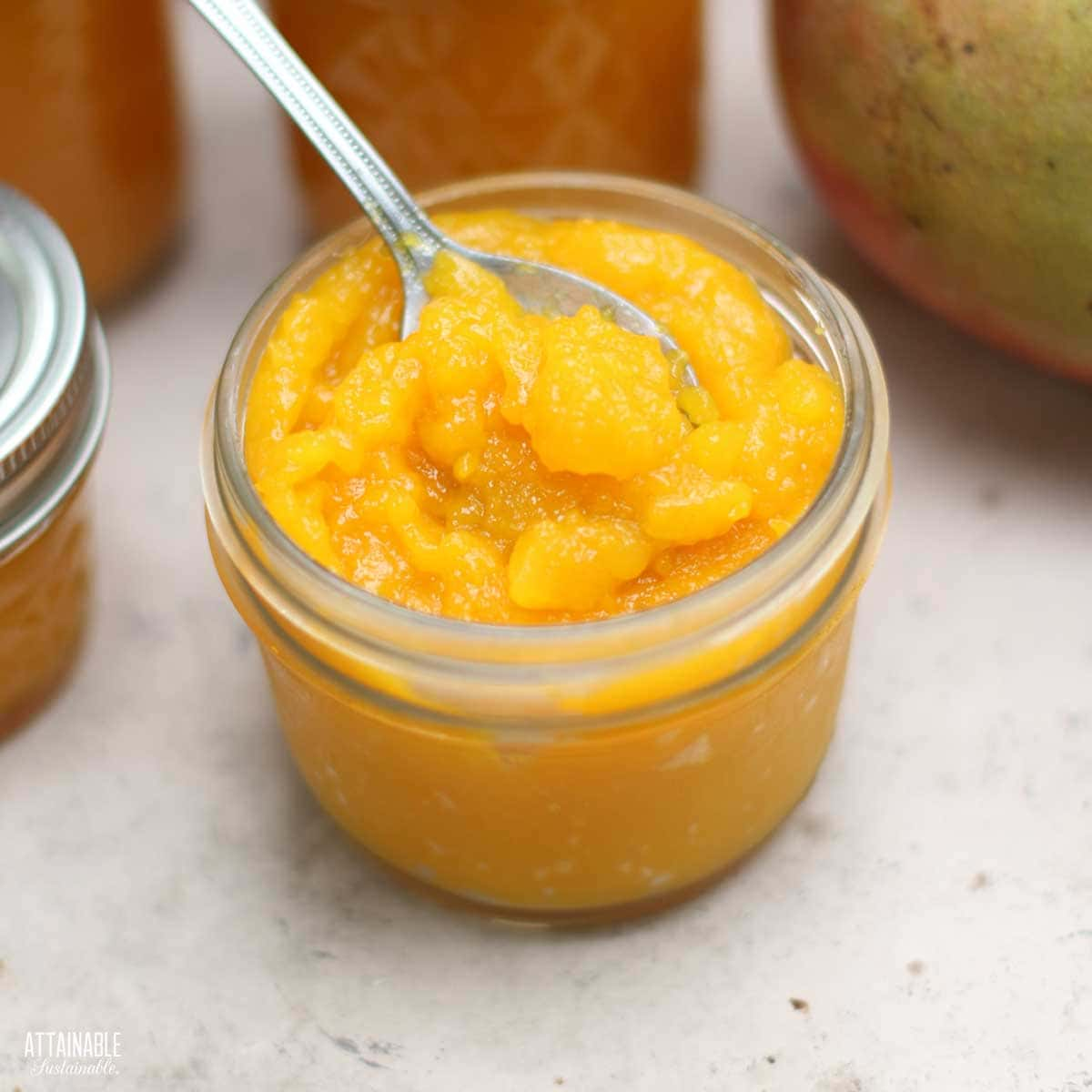
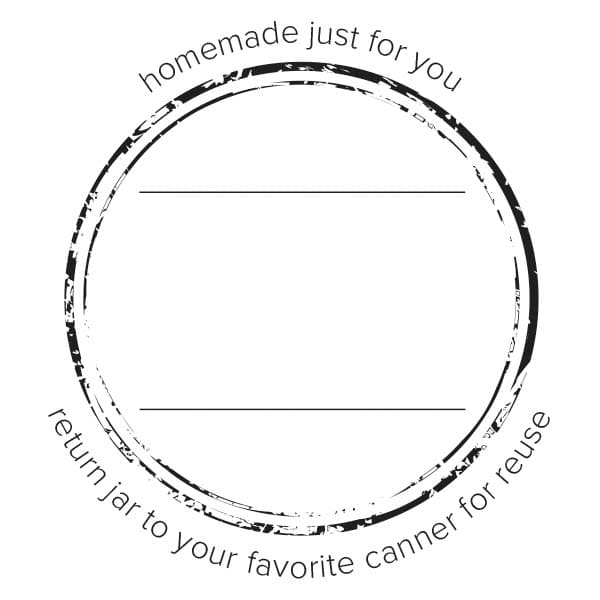
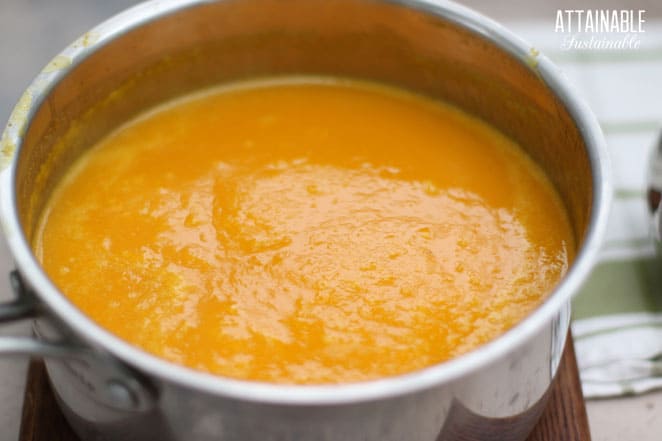

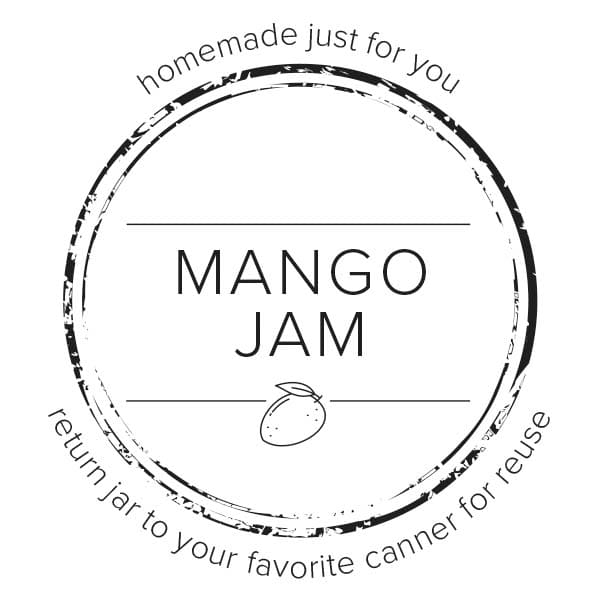
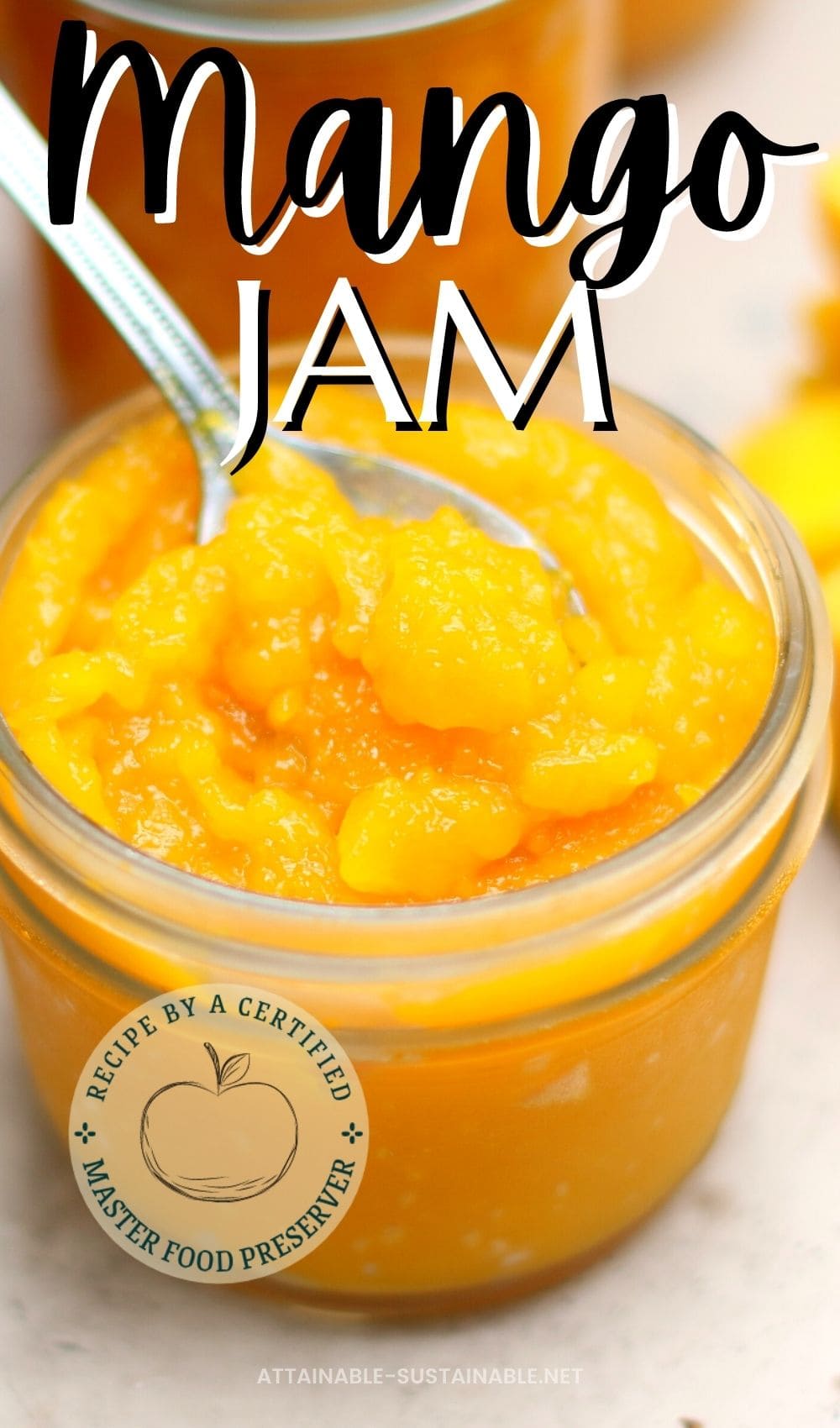





From Minnesota……
Living in the frozen tundra I only have access to frozen mangoes. Can I used frozen instead?
I am curious about adding sugar rush peach peppers to this. Have you ever tried something like that?
I haven’t tried that with this recipe but it sounds good!
Can I use Bernardino no sugar needed pectin instead of calcium needed Pompeos?
This recipe has only been tested as written; altering canning recipes is not recommended and can result in an unsafe food product.
can you use something else instead of calcium powder.
This recipe has only been tested as written; altering canning recipes is not recommended and can result in an unsafe food product.